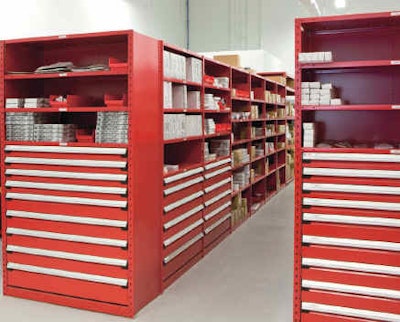
Many companies do not recognize the value that can be released from changing the MRO stores operation to provide optimum reliability. If they do, there are questions as to what steps to take and who would be responsible to implement the necessary change process. These unanswered questions are the main reasons that unacceptable MRO conditions continue to exist.
There are many conventions, expos, articles, and speaking sessions that address the world of MRO as a part of their syllabus; for example, the Institute of Supply Chain Management (ISM) has had a conference & expo this week (May 3-6) where MRO is referenced. The missing link is how to go from recognizing the need to change, through implementation, and then to a complete exit from the hardware business while establishing reliability and maintenance (R & M) excellence support for reliability efforts.
Here follows the steps to be considered:
1. RECOGNIZE: The contribution that a world class MRO storeroom can make to R & M excellence must be recognized and measured. By creating a R.O.I. that addresses the project, you have the financial and non-financial reasons to move forward. The R.O.I. compares your existing stores costs (including downtime, emergencies, personnel, inventory, etc.) to the cost of establishing a world-class store operation that is coordinated with Lean maintenance initiatives.
2. AGREEMENT: All plant disciplines, including purchasing, maintenance, finance, and engineering, must be in agreement to support the effort … the need to change… and agree as to who is responsible for attaining the benefits.
3. The SOP: The Standard Operating Procedure is the process that all must follow to achieve the goals of the change. The SOP needs to satisfy the various needs and desires of all plant disciplines and requires input from all. Most of all, storeroom procedures must constitute a support relationship directly with maintenance efforts.
4. IMPLEMENTATION: The most important facet of the SOP is the implementation process. If not implemented properly, the program will fail; experience and dedication is required for success. The implementation plan should include a stores reconfiguration and a deep reconstruction of all SKU descriptions to achieve accuracy and consistency.
5. OPERATION: The correct SOP and personalized implementation will have little effect if there is little or no support with respect to training the correct personnel to perform the necessary duties. Procedures need to be monitored, reinforced, and sustained.
6. CMMS: Employing the correct CMMS is essential to satisfy audit trail requirements, inventory control, and achieve the information flow necessary for reliability.
7. SUSTAINABILITY: A major factor in the “5-S” concept is need to sustain what has been established. It must be recognized that a lack of effort to sustain what has been accomplished results in a return to the unreliable and unacceptable MRO situation with which you started. All the effort, time, and money will be wasted.
8. MEASURE & REPORT: Another important action is to make sure the benefits of the change are measured; this can be accomplished by comparing results to the standards established in the R.O.I.
Measurement is one thing; however, reporting the effects to the affected departments and to senior management is essential. Questions will arise, i.e. “Why have we changed our MRO?”, and “What have you done lately?” By measuring and reporting consistently, the naysayers are quieted and the effort progresses. Continual improvement occurs when results are documented.
The big question is: Shall we do it in house or hire a third party? Make or Buy?
- IN HOUSE
- This requires the assignment of a manager whose sole duties are to facilitate the change, sustain the process, and continually improve. Utilizing just parts of peoples’ times does not work.
- The manager assigned must have the knowledge and experience to manage a storeroom and be able to recognize the things that need to be changed in order to achieve the desired reliability.
- The plant and/or the corporation must be willing to invest the dollars needed to achieve these MRO benefits, and be ready to assume the opportunity costs associated with the change.
- The perceived benefit of keeping stores “in house” is that control is maintained and that the stature of the company will result in a lower cost of ownership for the plant. ... ”We do not need an outside company to tell us how to run our operations”
- THIRD PARTY MRO
- A third party whose sole source of income is reliable storeroom management must produce results or they would not be in business; there must be a reduction in the TCO … Total Cost of Ownership.
- The third party provider selected must be able to show that the cost of the change will be paid out of the measured benefits that accrue to the plant.
Since sustaining the program and providing continual improvement determine if the provider will be retained and renewed, the selected provider must perform or go out of business … a real-life incentive.
Certainly any successful company does not need an outside source to tell them how to operate their core businesses. Operating a hardware store, AKA the company’s MRO store, is not within their core business and should be left to the proven experts in order to reap the available values.
George Krauter serves as Vice President of Storeroom Solutions, Inc. He brings more than 50 years of experience in establishing cost recovery methods for the MRO supply chain. Contact George at 610-246-6492 or via email atgkrauter@storeroomsolutions.com. www.StoreroomSolutions.com























